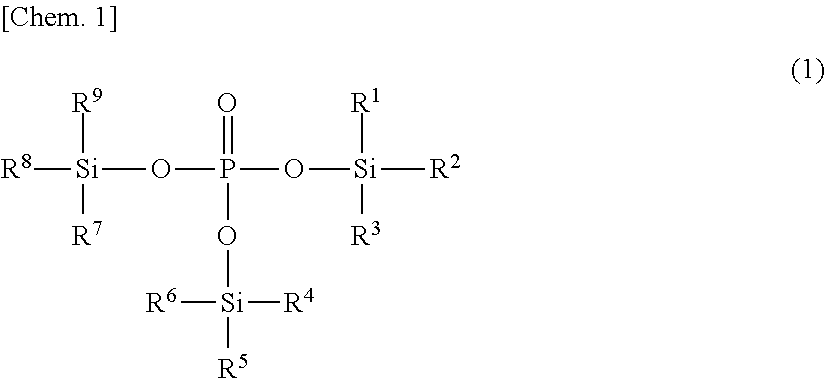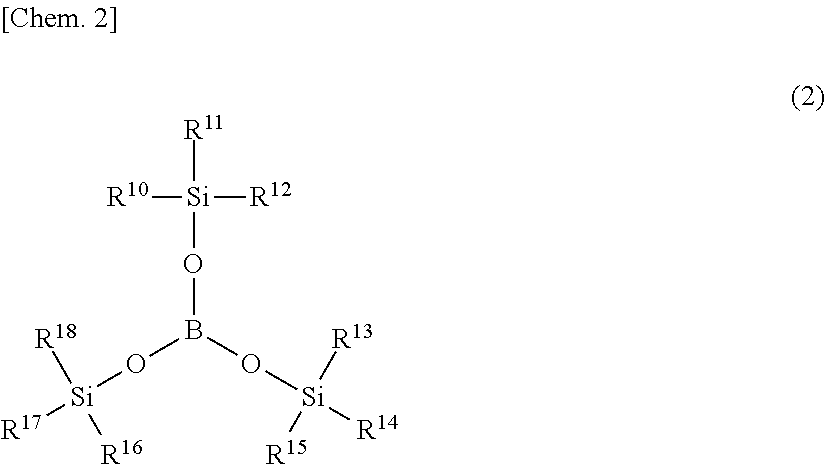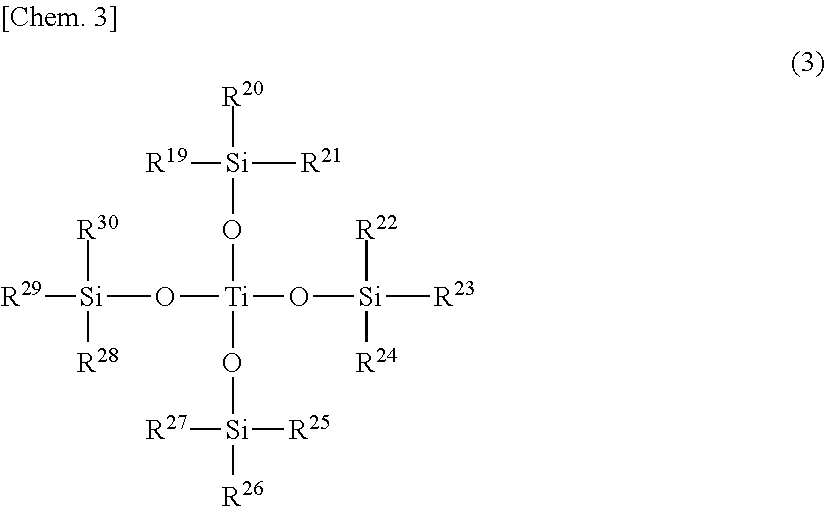Nonaqueous electrolyte battery
a technology of electrolyte battery and non-aqueous electrolyte, which is applied in the direction of non-aqueous electrolyte cells, cell components, electrochemical generators, etc., can solve problems such as inability to solv
- Summary
- Abstract
- Description
- Claims
- Application Information
AI Technical Summary
Benefits of technology
Problems solved by technology
Method used
Image
Examples
example 1
Production of Electrolyte Solution
[0063]The following compositions were used for the nonaqueous electrolyte.
A1: 1.2 M LiPF6MEC (comparative example)
A2: 1.2 M LiPF6MEC+1 wt. % of trimethylsilyl methanesulfonate (comparative example)
A3: 1.2 M LiPF6MEC+1 wt. % of TMSP (comparative example)
A4: 1.2 M LiPF6MEC+1 wt. % of TMSB (comparative example)
A5: 1.2 M LiPF6MEC+1 wt. % of TMST (comparative example)
B1: 1.2 M LiPF6EC:MEC=1:99 (vol. %) (comparative example)
B2: 1.2 M LiPF6EC:MEC=1:99 (vol. %)+1 wt. % of trimethylsilyl methanesulfonate (comparative example)
B3: 1.2 M LiPF6EC:MEC=1:99 (vol. %)+1 wt. % of TMSP (example)
C1: 1.2 M LiPF6EC:MEC=2:98 (vol. %) (comparative example)
C2: 1.2 M LiPF6EC:MEC=2:98 (vol. %)+1 wt. % of trimethylsilyl methanesulfonate (comparative example)
C3: 1.2 M LiPF6EC:MEC=2:98 (vol. %)+1 wt. % of TMSP (example)
D1: 1.2 M LiPF6EC:MEC=5:95 (vol. %) (comparative example)
D2: 1.2 M LiPF6EC:MEC=5:95 (vol. %)+1 wt. % of trimethylsilyl methanesulfonate (comparative example)
D3: 1...
example 2
Production of Electrolyte Solution
[0073]The following compositions were used for the nonaqueous electrolyte.
L1: 1.2 M LiPF6MA (comparative example)
L2: 1.2 M LiPF6MA+1 wt. % of TMST (example)
L3: 1.2 M LiPF6MA+1 wt. % of TMSB (example)
L4: 1.2 M LiPF6MA+1 wt. % of TMSP (example)
M1: 1.2 M LiPF6MA:EC=98:2 (vol. %) (comparative example)
M2: 1.2 M LiPF6MA:EC=98:2 (vol. %)+1 wt. % of TMST (example)
N1: 1.2 M LiPF6MA:EC=95:5 (vol. %) (comparative example)
N2: 1.2 M LiPF6MA:EC=95:5 (vol. %)+1 wt. % of TMST (example)
O1: 1.2 M LiPF6MA:EC=90:10 (vol. %) (comparative example)
O2: 1.2 M LiPF6MA:EC=90:10 (vol. %)+1 wt. % of TMST (example)
P1: 1.2 M LiPF6MA:MEC=90:10 (vol. %) (comparative example)
P2: 1.2 M LiPF6MA:MEC=90:10 (vol. %)+1 wt. % of TMST (example)
Q1: 1.2 M LiPF6MA:EC=30:70 (vol. %) (comparative example)
Q2: 1.2 M LiPF6MA:EC=30:70 (vol. %)+1 wt. % of TMST (example)
R1: 1.2 M LiPF6MA:EC:MEC=10:20:70 (vol. %) (comparative example)
R2: 1.2 M LiPF6MA:EC:MEC=10:20:70 (vol. %)+1 wt. % of TMST (example)
S...
PUM
| Property | Measurement | Unit |
|---|---|---|
| volume % | aaaaa | aaaaa |
| volume % | aaaaa | aaaaa |
| volume ratio | aaaaa | aaaaa |
Abstract
Description
Claims
Application Information
 Login to View More
Login to View More - R&D
- Intellectual Property
- Life Sciences
- Materials
- Tech Scout
- Unparalleled Data Quality
- Higher Quality Content
- 60% Fewer Hallucinations
Browse by: Latest US Patents, China's latest patents, Technical Efficacy Thesaurus, Application Domain, Technology Topic, Popular Technical Reports.
© 2025 PatSnap. All rights reserved.Legal|Privacy policy|Modern Slavery Act Transparency Statement|Sitemap|About US| Contact US: help@patsnap.com



